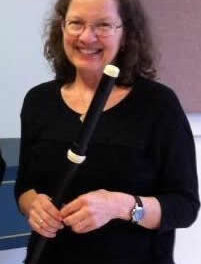Eiko and Koma, the Japanese-born experimental, theatrical, mystical dance duo, returned to Duke on October 19 for two performances outside the new Nasher Museum of Art. Their dance “Tree Song” was part of the ancillary programming accompanying the Nasher’s inaugural exhibition, “The Forest: Politics, Poetics and Practice.” Eiko and Koma have appeared many times at the American Dance Festival, but these events were sponsored by Duke Performances in conjunction with the Nasher.
“Tree Song” was commissioned by the American Dance Festival in 2003, and premiered at a different site on Duke’s East Campus that year. This version of “Tree Song” naturally differed from earlier performances at Duke and elsewhere in its need to take into account both the specific topography of the site and the presence of Patrick Dougherty’s woven sapling sculpture, which the dancers used both as a “stage” boundary and as part of their “set.” This year’s performance also included re-designed lighting and a backdrop showing a large reclining figure and groundcloth painted with pink water lilies by the Reyum Painting Collective of Phnom Penh, Cambodia, with whom Eiko and Koma are currently collaborating on a forthcoming work.
Eiko and Koma often perform in low-light settings, and “Tree Song” began at dusk. Covered, as usual, in ashy-white body paint, bare-footed, their long dark hair flowing loose, the two dancers — she wrapped in yellow gauze, he in red — entered the performance area bearing candles, from which they lit more candles set in a low altar-like container. After a long bow to the light, they walked out to a large pine preserved during the museum’s construction, and pressed against it with their foreheads.
Accompanied at this point only by insect sounds and the hum of cars and the roar of busses, Koma disappeared from view behind the backdrop, while Eiko crossed in front of the painting, moving fairly rapidly for her — often their movements are so slow you can’t tell they are moving until you realize they are in a different spot. Just as the deepening dusk began to obscure her features, the first stage light came on, its glow increasing the sense of having stumbled onto some secret ritual in the forest.
Koma could then be seen slipping through the twists and tunnels of Dougherty’s woven- branch tree sculpture. He stood like a sculpture, like a tree, leaning slightly. A slight, eerie music began, and the dancers moved towards each other, hands facing, until they mimicked the form of the sculpture, or of a tree with a large cavity. Clinging together, they entered the “tree,” became the tree, before emerging again to move onto the painted “water” square.
Then followed a long sequence in which they bear a large branch on their backs, forming a bridge. As they eeled across the “water,” the branch rolled away, and Eiko disappeared again within the “tree.” Koma dragged himself closer, then bent in half; he eased toward the hole while Eiko crept out from the side, now wrapped in black.
While he was within, she’d laid herself across the opening. He pushed out and beyond her; they struggled on the “water” like limbless trees in the current, and then like fish, pushing and shoving each other with their heads, rolling and melting into lumps, while distressed bird sounds fill the air.
Embracing, they rose jerkily, but fell back before approaching and leaning against a big pine. Koma pulled a leaf-bearing branch around them like a cloak and sheltered them with it before they wriggled away into the dark.
I am a huge fan of Eiko and Koma, but this piece did not live up to the quality of much of their other work. Much of their magic derives from the incredible slowness with which they can move — but here they moved with an ordinary slowness that only seemed leaden. And it was not ever clear that there was a connection between the movement and the set’s imagery. The piece was about 50 minutes, which was about 20 minutes too long. Part of the audience’s restlessness might be attributed to the discomforts of the situation — the plastic folding chairs, the bad sight lines, the glare of the streetlights, the roar of the busses, the people riding through on bicycles—but much of our dissatisfaction was surely due to the unhappy combination of baffling symbolism and the work’s obvious trajectory.












